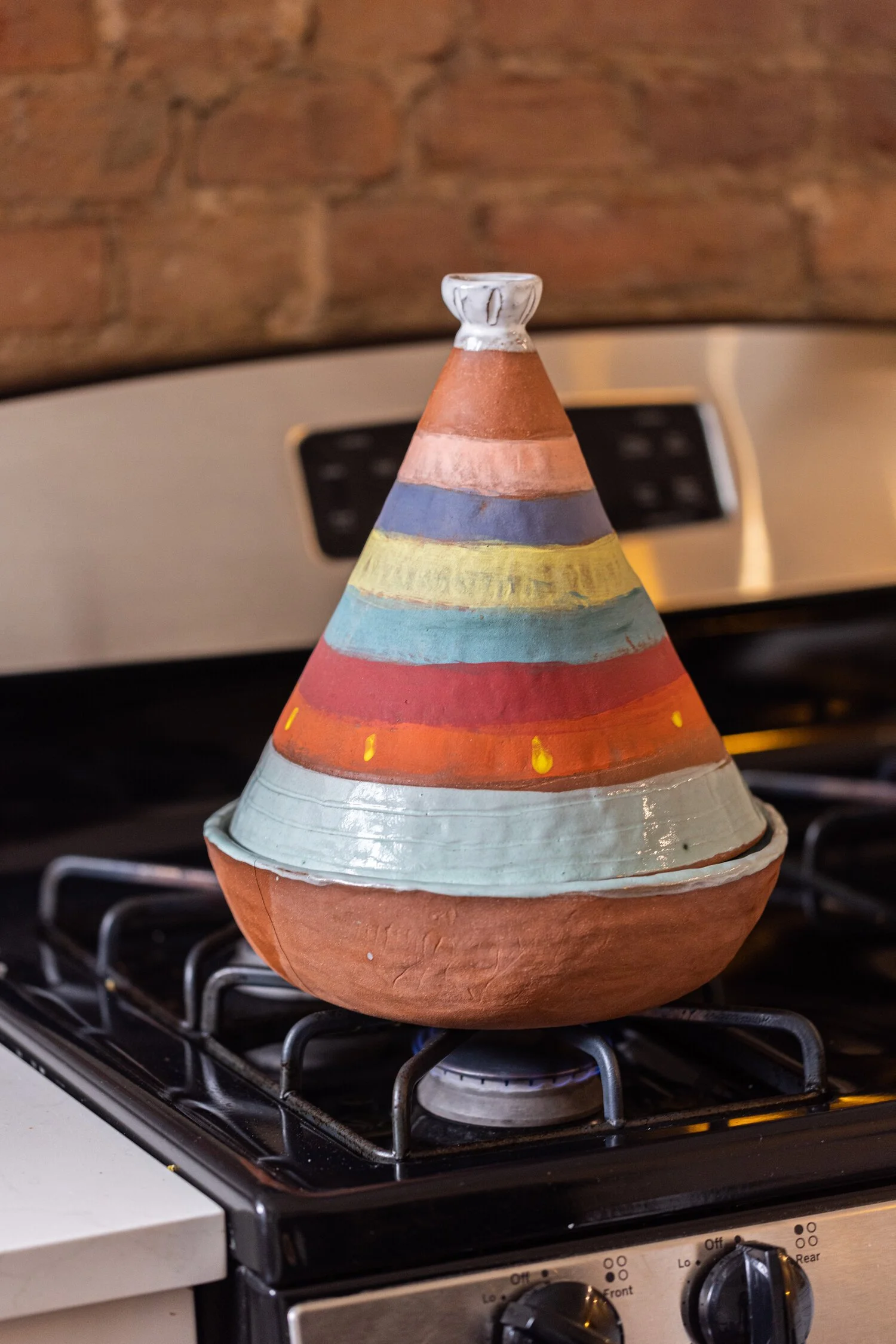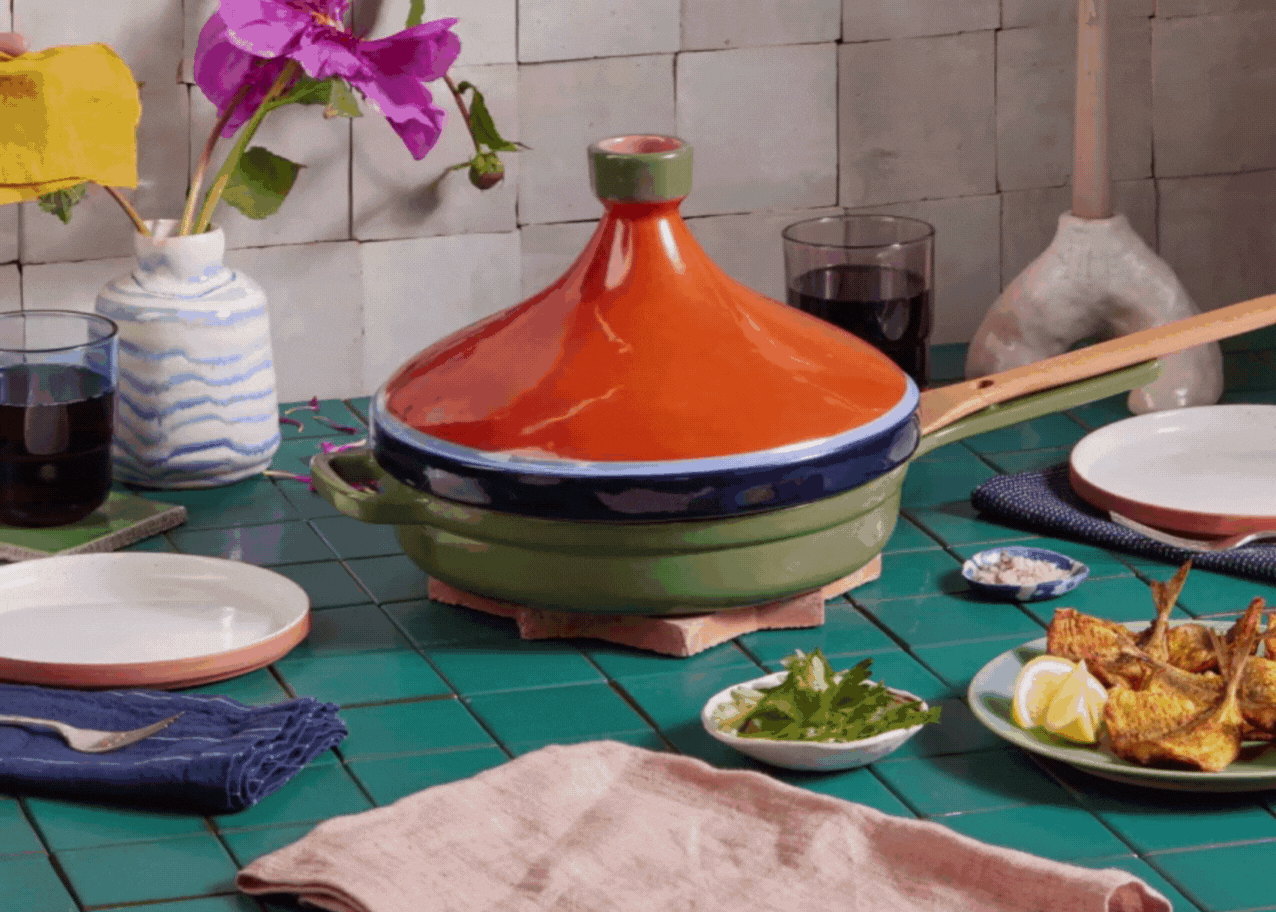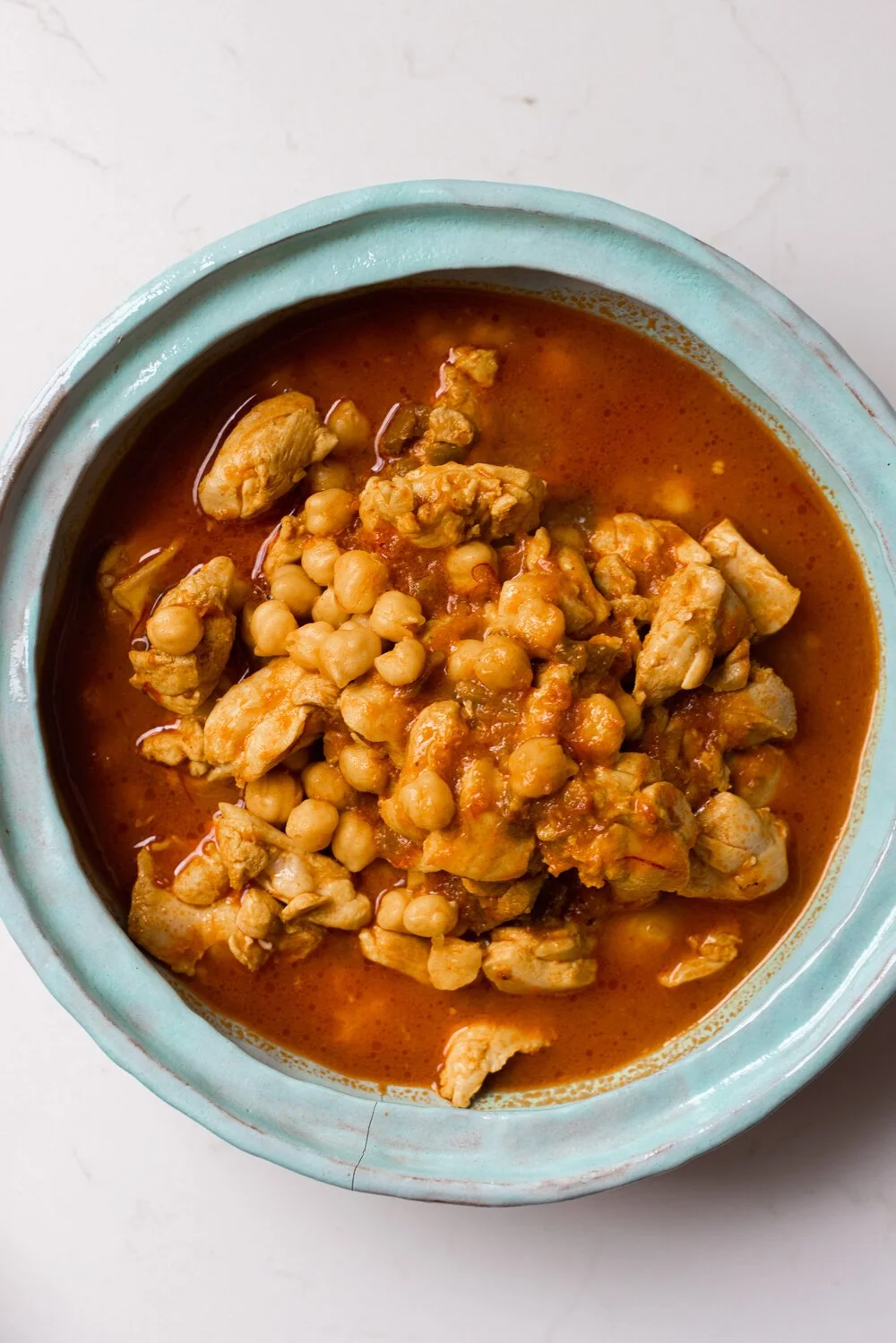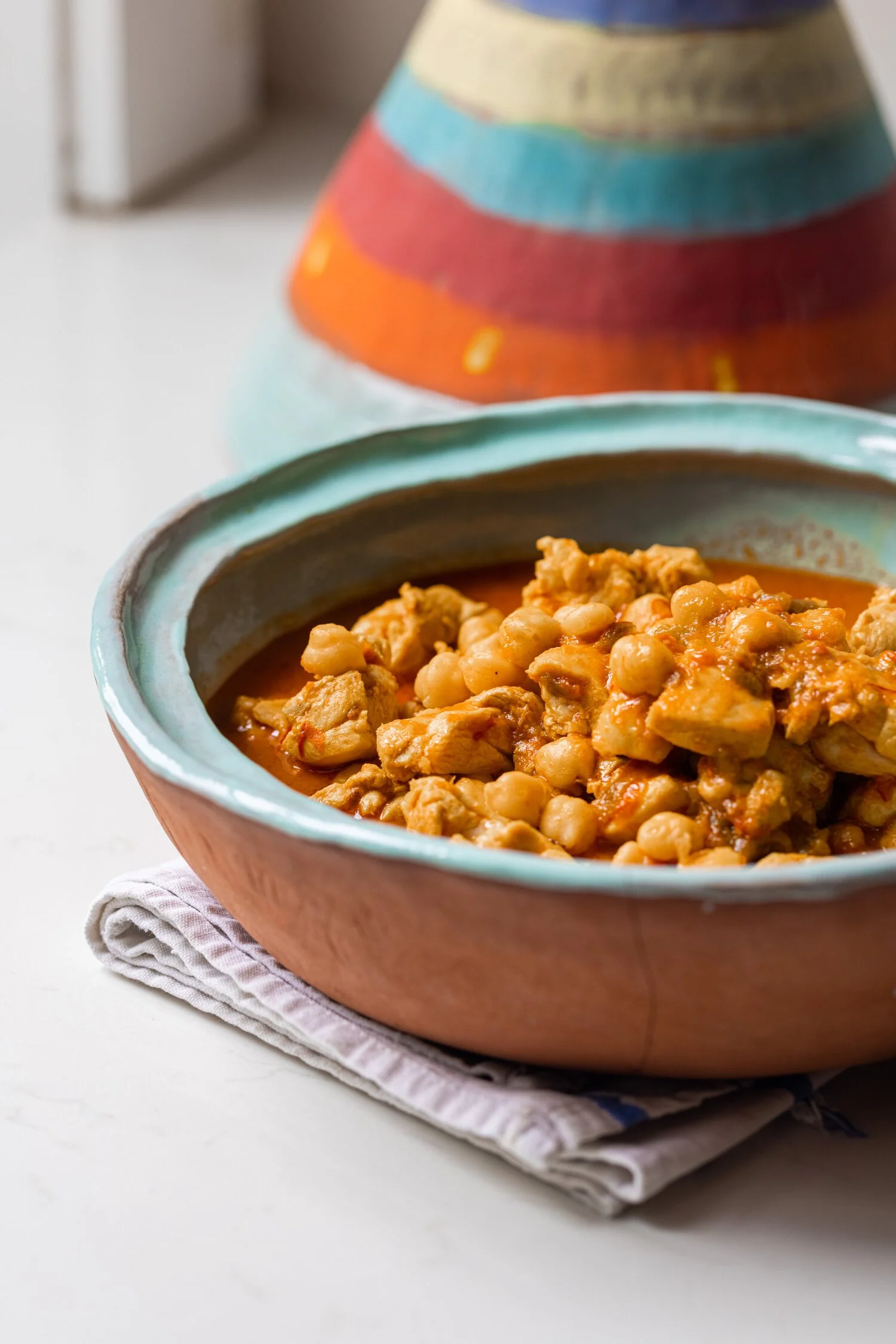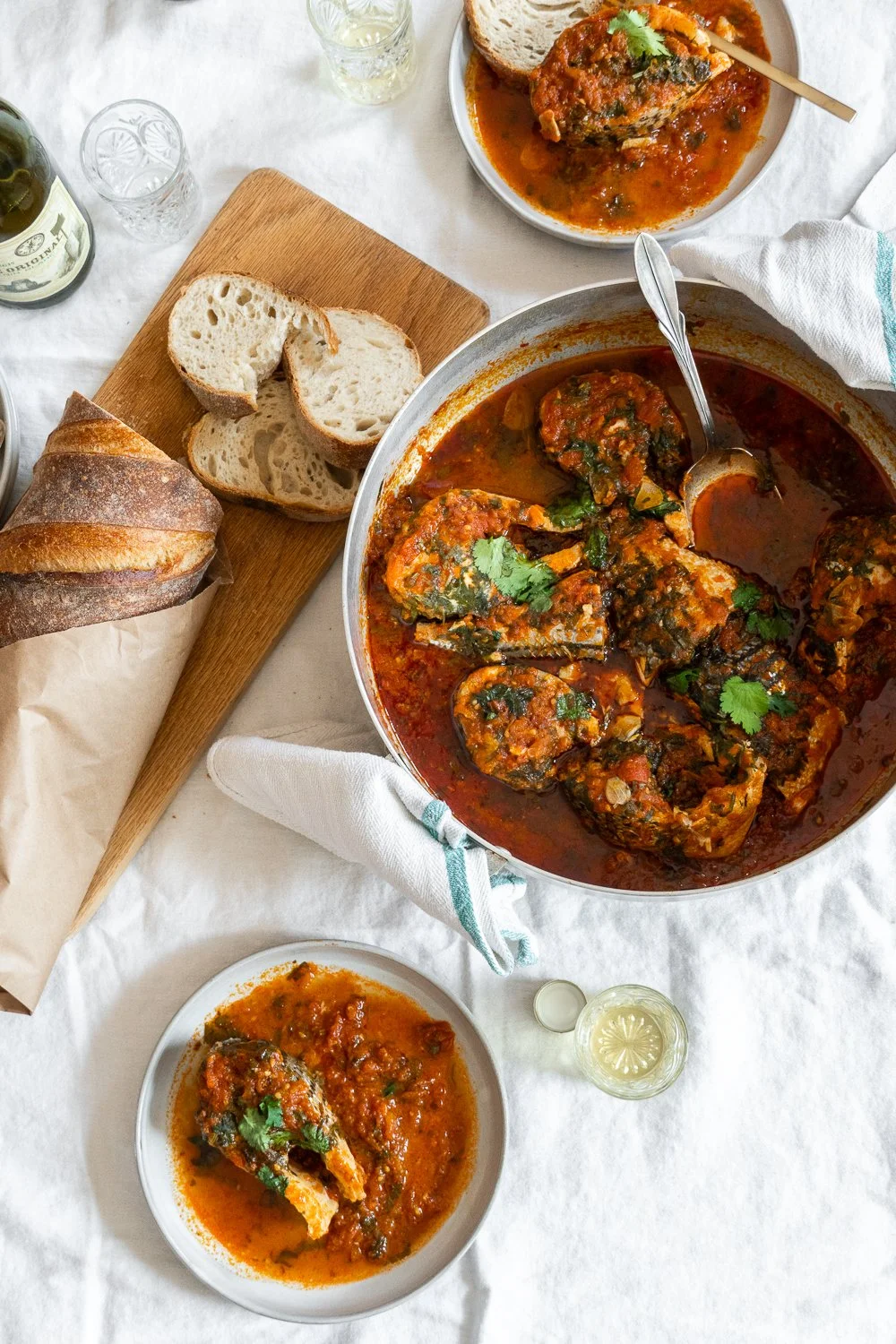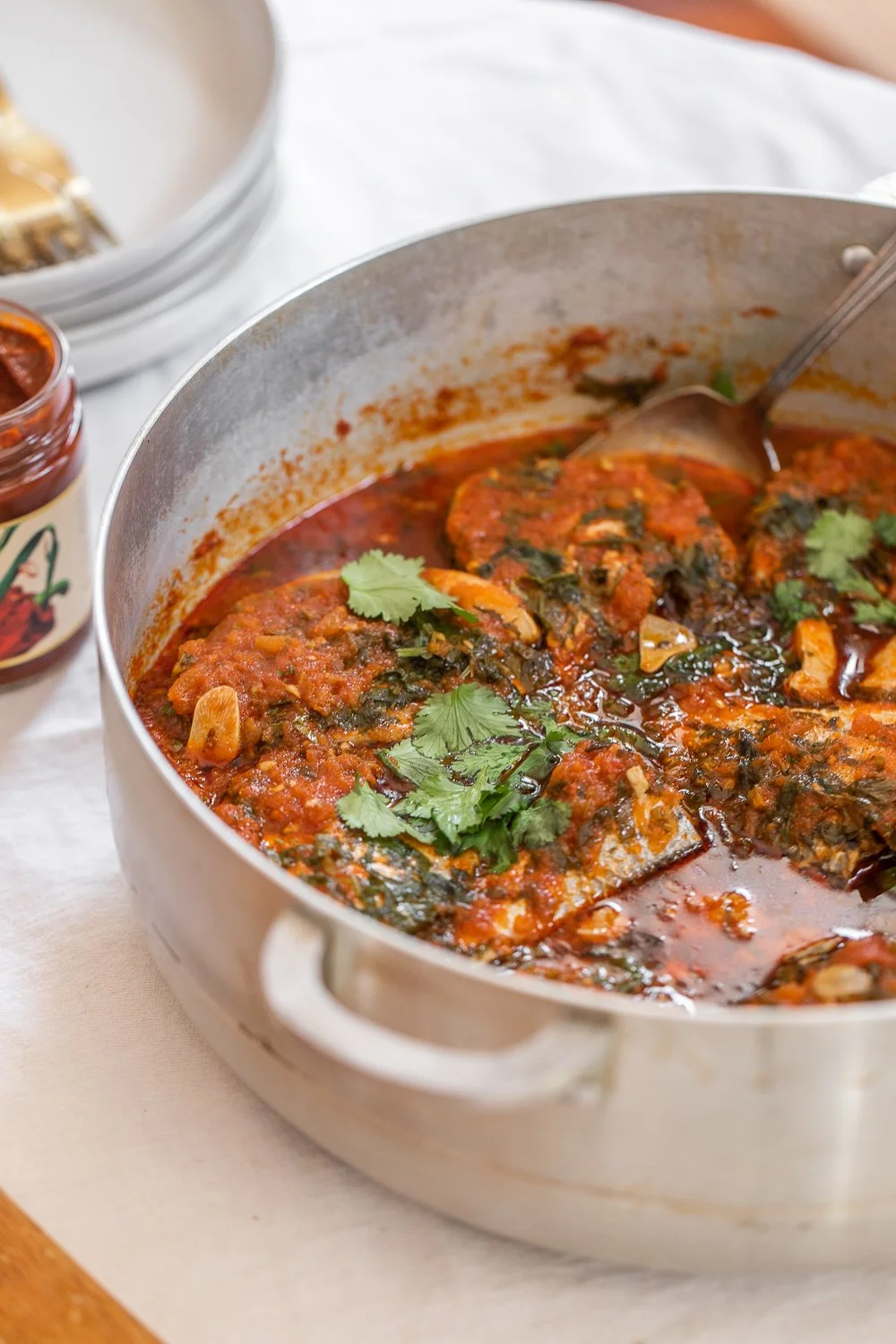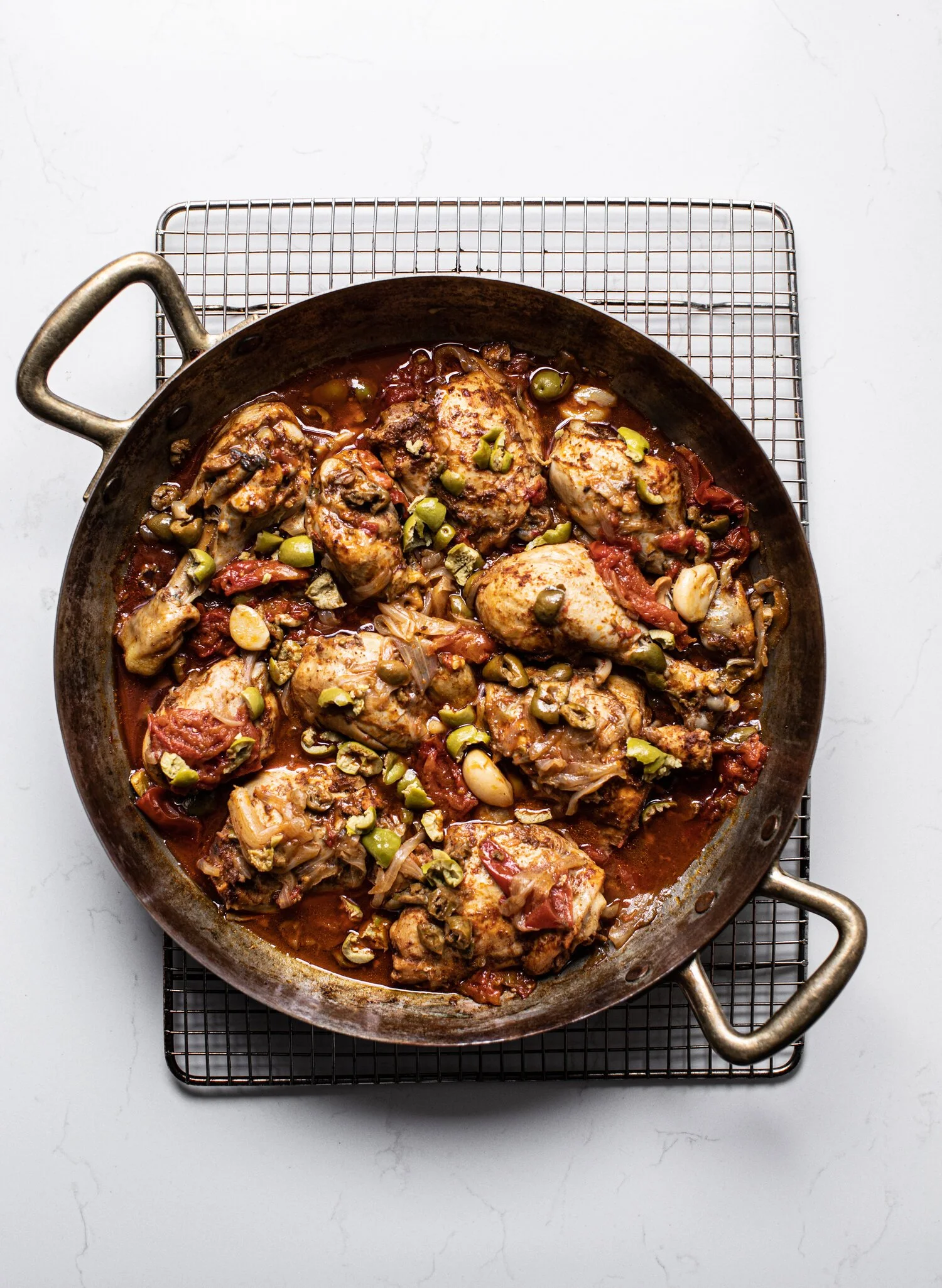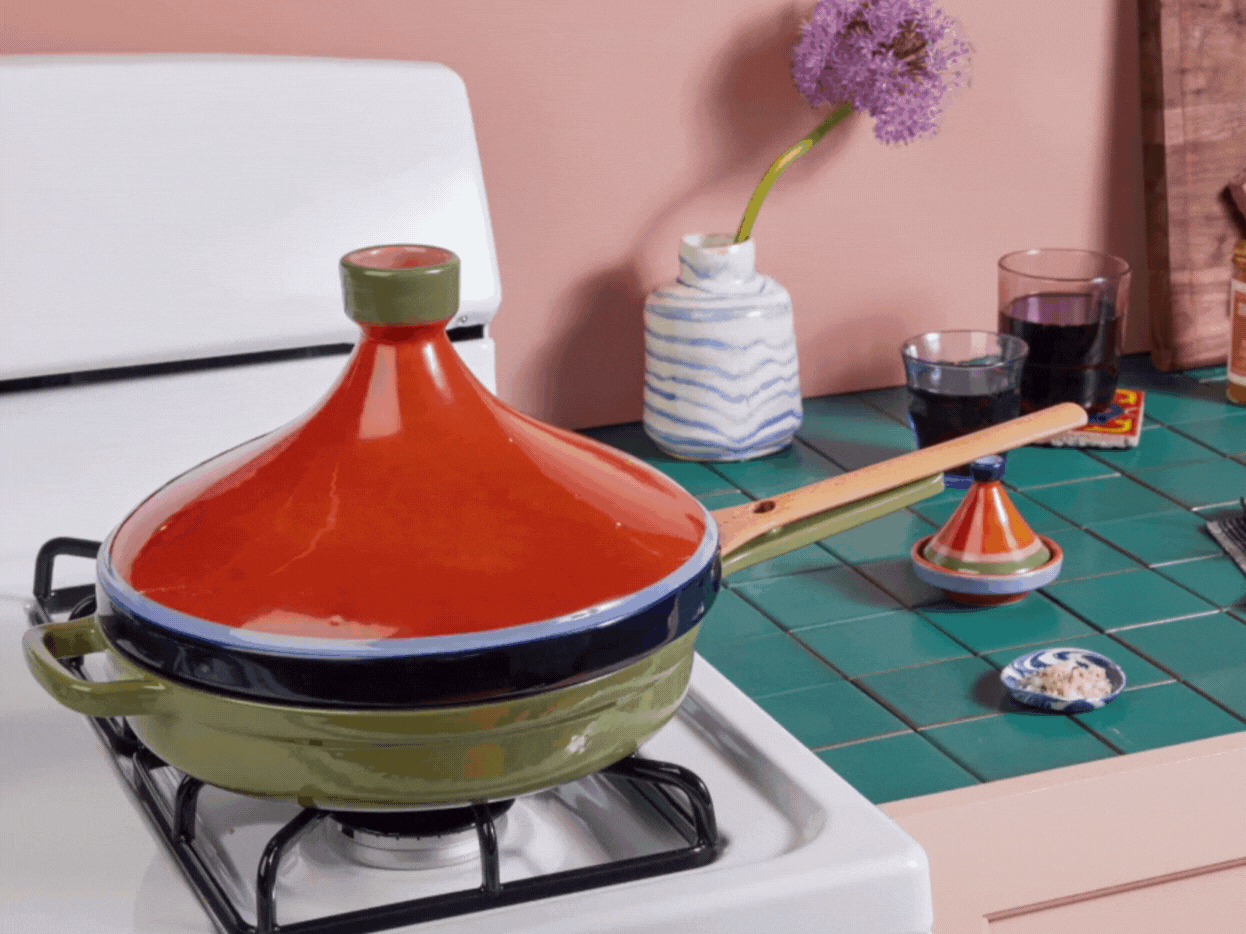In North Africa the word tagine has two meanings, it’s used to describe a succulent, stew-like dish, as well as the clay vessel it’s slow-cooked in.
Tagine - The Cookware
The Tagine has been at the core of North African cooking for hundreds of years. It’s known that Berbers, an ethnic group indigenous to North Africa, used tagine as a “portable oven”, allowing them to prepare food over the fire at any time while moving around.
The first written description of a “tagine-style” dish appeared in a collection of stories called One Thousand and One Nights (also known as “Arabian Nights”) back in the ninth century.
Design
The design of the tagine is certainly remarkable in its unique appearance and practicality. The vessel is made up of two parts - a round, shallow base and a tall, cone-shaped lid sitting on top of it.
Tagines come in a range of sizes, anywhere from small ones meant to serve 1-2 people to family-size pots, and even large ones to hold enough food for a dozen diners.
The structure of the Tagine promotes a moist, hot environment for the food, resulting in a juicy, flavorful dish. After the ingredients are mixed with oil and spices in the bottom half of the pot, the base is tightly covered with its conical lid. Afterward, the tagine is placed over low heat for several hours. Then, magic happens. All of the accumulated moisture rises into the dome, condenses, and flows straight back down creating a thick, rich sauce and tenderizing the meats and veggies.
Tagine doubles as a serving plate. Simply, take off the lid and serve the steamy, aromatic dish to your guests.
What are tagines made of?
Historically, tagines are made out of earthenware or unglazed clay. When it comes to slowly-simmered dishes, clay is highly praised in cooking.
The porous nature of clay helps to trap moisture and retain natural juices and oils from food. As a result, you end up using a minimal amount of oil but achieve an incredibly moist dish. Clay helps preserve the taste of meats and vegetables cooked in the tagine as well.
Also, clay is a heat insulator, it captures and maintains the temperature of a dish for a long period of time. No need to worry about serving your guests a cold dinner!
Paula Wolfert on Clay Pot Cooking
Photo by Claire Bloomberg
Photo by Claire Bloomberg
Paula Wolfert is an American cookbook author and food expert, recognized for introducing American cooks to the rich flavors of Mediterranean and North African cooking. Over her 50 year career, Wolfert wrote 9 books on the regions, became a five-time James Beard Award winner, and won the Julia Child Award 3 times. Besides her extensive knowledge of Moroccan food, Wolfert is known for being the queen of American clay-pot cooking. In her book, Mediterranean Clay Pot Cooking, she explores why “most food—and Mediterranean food in particular—tastes better cooked in clay”.
If you wish to learn more about Paula’s book and her love for using clay in cooking, we suggest reading this article.
Tips for Cooking in a Tagine
Tagines don’t handle sudden temperature changes and might crack.
Make sure to check if your tagines requires “seasoning” prior to use.
Avoid using highly decorative clay tagines.
Make sure you place the tagine above the heat source, not directly on top of it.
Be patient! The result is worth it, trust us
Tagine - The Stew-like Dish
Tagine is a stew-like North African dish, made in a (you guessed it) tagine. Typically, it’s a variety of meats and vegetables simmered for a long period of time in lots of liquid (most often oil or butter), generously seasoned with herbs and spices such as ras el hanout, harissa, preserved lemons, and dried fruits like raisins and apricots. Tagines transform even the toughest pieces of protein into tender, juicy goodness.
Video Courtesy of Our Place
One of the earliest and most known descriptions of cooking Tagine is the one from Ibn al-Adim:
“Boil the meat and fry with fresh coriander, onions and hot spices and a little garlic. Then pick out the fennel hearts and cut in half. Put over the meat. Put back some of the broth on it along with sheep’s tail. Boil until cooked and the broth has been absorbed. Remove [from the heat].
— Ibn al-Adim, Kitab Al Wusla
*It is important to point out that a Tunisian tagine is a completely different dish. Tunisian tagine resembles something similar to that of a french quiche without its shell or a frittata.
How To Make a Tagine with Chef Mourad Lahlou
Watch chef Mourad Lahlou prepare his take on the classic Chicken & Olives Tagine. Our Preserved Lemon Paste and Ras El Hanout would make the perfect addition in this recipe : )
Let’s get cookin’
Now that we’ve talked about the background and technical aspects of Tagine, it’s time to take this conversation to the kitchen! Keep reading for some of our favorite recipes to make in your tagine or slowly-simmer in a pot.
Chicken Tagine with Chickpeas in Matbucha Saffron Sauce
Photo by Maria Midoes
Photo by Maria Midoes
Moroccan Fish in Tomato & Harissa Sauce
Braised Chicken with Harissa & Olives
Photo by Maria Midoes
Photo by Maria Midoes
Our Place Tagine / NY Shuk
In the beginning of July, Our Place, a popular cookware brand, notorious for its best-selling Always Pan, expanded its Traditionware Collection with a Moroccan Tagine. Each beautifully glazed tagine is unique, designed and handcrafted by artisans in Marrakesh.
We’re honored to have Our Place complement every tagine order with a bottle of our Ras El Hanout, a pantry staple in North African cooking.
Video Courtesy of Our Place

